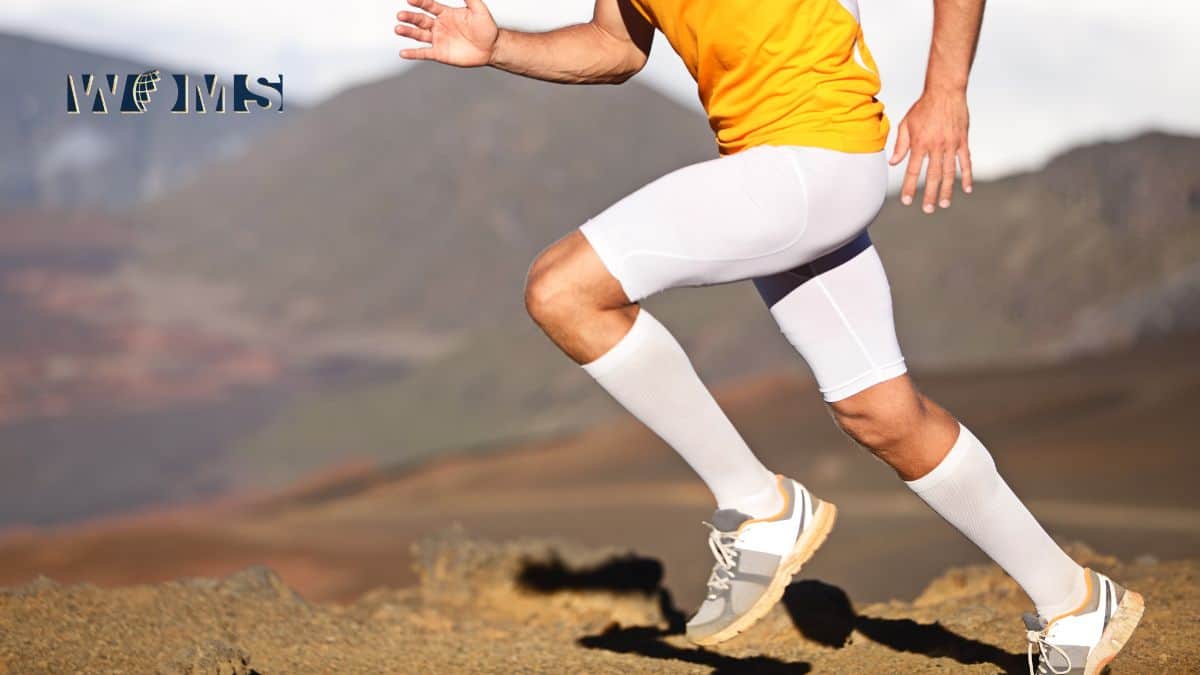The Science Behind Compression Socks and Neuropathy
How Graduated Compression Can Improve Circulation

Compression socks are gaining popularity for a variety of benefits. One of those benefits is helping ease symptoms of neuropathy. Neuropathy is a condition that causes discomfort and pain throughout the legs due to nerve damage.
With neuropathy having the ability to affect one’s life, compression socks are a noninvasive solution to be seriously considered. With all the women’s stylish compression socks on the market, it’s no surprise they are picking up in popularity.
But how much do we really know about the science behind them? Let’s take a look.
A Deeper Dive Into Neuropathy
Understanding neuropathy is the first step to understanding how it can be treated. Especially when it comes to compression socks, there can be a number of causes to point to where it concerns neuropathy. Autoimmune diseases, nerve compressions, various vitamin deficiencies, and autoimmune diseases.
When nerves become damaged, symptoms such as burning sensations and tingling can occur in the legs and extremities. To manage these symptoms, the goal is to maintain mobility while reducing any discomfort.
Where Do Compression Socks Help?
To bring comfort and maintain mobility, compression socks can be a wonderful option. Most importantly, it’s backed by science through its function. Compression socks are designed to provide graduated pressure to the legs and the feet.
With graduated compression socks, the amount of pressure is the greatest at the ankle and continues to decrease as it moves toward the knee. Below is what one can expect from wearing compression socks.
Improved Blood Circulation
When wearing compression socks, pressure is put on the veins in the legs and feet. That pressure pushes the upward flow of blood to the heart. Graduated compression offers the strongest pressure at the ankle, it helps constrict blood vessels. In turn, this stops blood from pooling in the lower extremities.
When blood circulation improves because of this process, oxygen and nutrient delivery to tissues throughout the body is better. This leads to better overall function. Any waste or metabolic debris in the bloodstream and body gets removed faster and more efficiently.
When this occurs, inflammations and swelling decrease helping with the discomfort formed from neuropathy.
Reduction of Edema
Edema can often be a result of neuropathy. Edema is fluid build-up in the body’s tissue. With the assistance of compression socks, we know that they will help with swelling. The pressure from the compression works to move the fluid out of the tissues so it can be excreted from the body.
Assist with Proprioception
Proprioception is something that everyone is familiar with by its name. Proprioception is our ability to sense our movement and balance in relation to our body’s positioning. By adding pressure to the nerves, our sensory receptors improve in our feet and legs.
Ultimately, we enhance our balance, coordination, and stability. With this, falls and related injuries are reduced. This can also help with a number of other symptoms.
Pain Relief and Sensory Stimulation
Compression socks can have a positive impact on neuropathic pain. The gentle pressure provided by the socks can stimulate the nerves in the legs and feet, effectively reducing pain signals being transmitted to the brain. This sensory stimulation can override the discomfort caused by damaged nerves, providing a soothing and calming effect.
Furthermore, compression socks can enhance tactile sensitivity, improving the ability to perceive touch and pressure. This heightened sensory input can counteract the numbness and tingling sensations often associated with neuropathy, helping individuals regain a sense of connection with their lower extremities.
How Do You Choose the Right Compression Level?
Compression socks come in different levels of pressure to choose from. The level of pressure that is chosen has a direct link to how severe the symptoms are from neuropathy. The compression levels can typically be divided into milk, moderate, and heavy compression.
The best approach to finding your fit is a combination of personal comfort level and speaking with your primary care physician. They can go over your symptoms as well as recommend reputable brands.
Trusting in Science
Compression socks are scientifically backed to help ease symptoms associated with neuropathy. Those who suffer from neuropathy deal with pain and discomfort, limiting their ability to enjoy and complete everyday tasks.
With reduced swelling and improved blood flow, among a number of other benefits, choosing to try compression socks is a great first step. Then, by working with your doctor, the level of compression and fit can be chosen!




